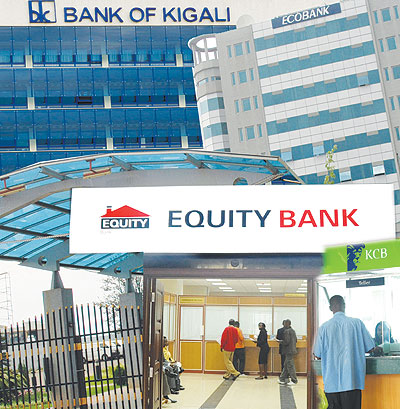Lending to private borrowers from commercial banks grew by 15.5 per cent in the last five months of 2012, a trend driven by a stable monetary policy and strong economic activities, official figures indicate.


Lending to private borrowers from commercial banks grew by 15.5 per cent in the last five months of 2012, a trend driven by a stable monetary policy and strong economic activities, official figures indicate. Figures from the National Bank of Rwanda show that new authorised loans recorded a growth of 38.9 per cent compared to in the first five months of 2011.The loans were channelled to several sectors with wholesale and retail trade, hotels and restaurants receiving the biggest share of 40.6 per cent of total credit granted to private sector, followed by construction and public works with 25.7 per cent.National Bank of Rwanda last week decided to maintain it key policy interest rate at at 7.5 percent as a way to maintain liquidity in the banking system as well as control inflation."Basically, it’s a cautious optimism, monetary policy has been stable but we have seen the peak of inflation in the region, it’s a call for prudent measures because the risks are still there,” said Maurice Toroitich the Managing Director of Kenya Commercial bank.Toroitich said the central bank should continue to tighten the monetary policy moderately to maintain prudent measures.Lawson Naibo Chief Operations Officer of Bank of Kigali said the increase in credit to private borrowers reflects confidence that banks have in the economy and all domestic economic activities."This is how I can interpret the trend, banks are very central in growth through the money they provide and have got confidence in the economic prospects of the country,” Naibo said.Central bank Governor, Amb.Claver Gatete emphasised that the decision taken to change key repo rate from 7 to 7.5 per cent in May have registered the good results. "Also short interest rates followed the changes in key repo rate in May 2012 from 7.0 to 7.5 per cent and the central bank’s need of mop up for liquidity management in order to meet monetary aggregates targets,” a document from central bank reads.Reports indicate that the commercial banks average lending rate slightly declined to 16.72 per cent in June from 16.87 per cent in May 2012 as a result of increasing competition within the banking sector. Average deposit interest rate was reported at 8.1 per cent in April 2012 and 9.9 per cent in May from 8.2 per cent in March 2012.Gatete recalled that when the rate was adjusted, people speculated the rate of interest rates would go up contrary to the cited reasons."Now we can prove you wrong. Since last year, when it had constantly remained at 17 per cent, it has not gone up,” Gatete maintained. "When we make a decision like this, make sure we have contingency measures to ensure it does not go up,” he added. "However, interest rate spread is likely to stay higher which would indicate an increase in investment risk and less competitive market,” the statement noted.Gatete assured that the economy is sound and stable despite the shock recorded in foreign exchange after Rwandan Francs depreciated. Economy is projected to grow by 7.7 per cent in 2012.The central bank data indicates that the Forex domestic market has been characterised by a higher demand driven by an increase in imports, pushing the Franc to depreciate by 1.4 per cent by the end June 2012. From January to June 2012, the National Bank of Rwanda transacted a total of $223.5 million compared to $134.1 million at the same period in 2011 registering an increase of 79.37 per cent. Latest figures show that the Franc’s rate of depreciation declined to 1.38 per cent on July 5th 2012 from Rwf630.4 to Rwf628.7 to the dollar.




